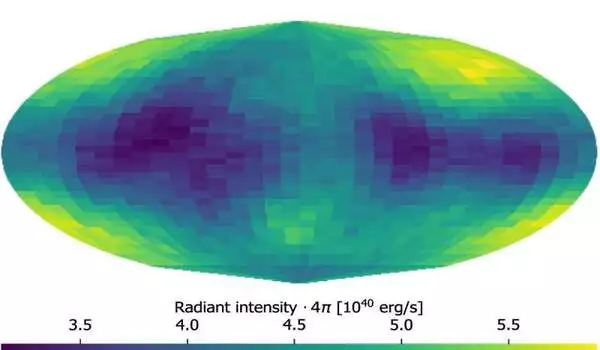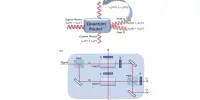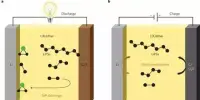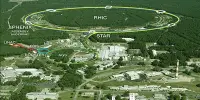Kilonovae are celestial phenomena that have received a lot of attention recently because of their significance in the synthesis of heavy materials like gold and platinum, as well as their link to gravitational wave detections.
An advanced new three-dimensional (3D) computer simulation of the light emitted after the merging of two neutron stars created a spectroscopic sequence identical to that of an observed kilonova.
“The unprecedented agreement between our simulations and the observation of kilonova AT2017gfo indicates that we have a good understanding of what happened in the explosion and aftermath,” says Luke Shingles, GSI/FAIR scientist and lead author of the paper published in The Astrophysical Journal Letters.
Recent measurements combining gravitational waves and visible light have identified neutron star mergers as the primary source of this metal. Scientists from the GSI Helmholtzzentrum für Schwerionenforschung and Queen’s University Belfast conducted the study.
Research in this area will help us to understand the origins of elements heavier than iron (such as platinum and gold) that were mainly produced by the rapid neutron capture process in neutron star mergers.
Luke Shingles
The light we perceive via telescopes is determined by the interactions of electrons, ions, and photons within the material ejected from a neutron-star merger. Radiative transfer computer simulations can be used to model these processes and the generated light. For the first time, researchers have created a three-dimensional simulation that self-consistently follows the neutron-star merger, neutron-capture nucleosynthesis, energy deposited by radioactive decay, and radiative transfer with tens of millions of heavy element atomic transitions.
Because it is a 3D model, the observed light can be predicted from any viewing angle. When viewed approximately perpendicular to the orbital planes of the two neutron stars (as observational data for the kilonova AT2017gfo suggests), the model predicts a series of spectral distributions that seem strikingly similar to what has been observed for AT2017gfo. “Research in this area will help us to understand the origins of elements heavier than iron (such as platinum and gold) that were mainly produced by the rapid neutron capture process in neutron star mergers,” Shingles said.

Approximately half of the elements heavier than iron are generated in an environment of severe temperatures and neutron concentrations, such as when two neutron stars combine. When they eventually spiral in toward each other and combine, the resulting explosion causes the ejection of matter with the necessary circumstances to form unstable neutron-rich heavy nuclei via a series of neutron captures and beta-decays. These nuclei decay to stability, releasing energy that produces an explosive ‘kilonova’ transient, a dazzling emission of light that fades quickly in about a week.
The 3D simulation integrates numerous aspects of physics, including the behavior of matter at high densities, the properties of unstable heavy nuclei, and heavy element atom-light interactions. There are still some hurdles to overcome, such as accounting for the pace at which the spectral distribution changes and describing material ejected at late times.
Future research in this area will improve our ability to forecast and interpret spectral properties, as well as our understanding of the conditions under which heavy atoms were synthesized. High-quality atomic and nuclear experimental data, such as that provided by the FAIR facility, is a critical component of these models.














